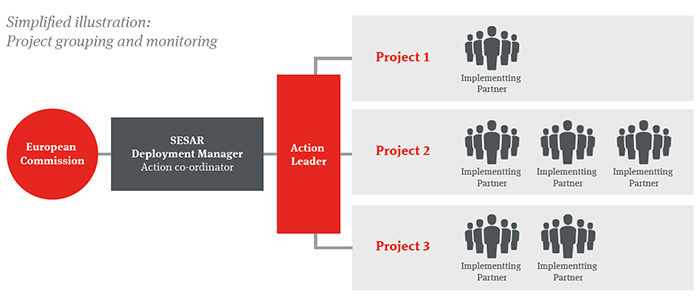SESAR started in 2004 with the Definition phase that delivered the ATM Master Plan. The Plan defines the content for the next generation of ATM systems and delivers roadmaps for the operational and technological changes required from stakeholders. This phase was executed by a consortium of representatives of EU airlines, aerospace manufacturers, airports and air navigation services providers.
In 2009, SESAR project moved into the Development phase to develop and validate the systems recommended in phase 1. The SESAR Joint Undertaking was established to manage the large-scale public-private partnership which involved around 3,000 experts in Europe and beyond in research and development programmes co-funded by the EU. The European Commission and EUROCONTROL were the founding members of the SESAR Joint Undertaking. Large stakeholders such as NATS, Airbus and Thales also became members.
In 2015, SESAR project moved into phase 3, Deployment. In this final phase concepts and technologies developed through the SESAR Joint Undertaking are brought into operation across Europe. A large consortium of EU airlines, air navigations service providers and airports was selected to be responsible at a management level for SESAR deployment and for monitoring implementation. The consortium is called, appropriately, the SESAR Deployment Manager.
The cost of taking the ATM systems into full deployment has been estimated at around €300 billion. On the benefits side, the European Commission estimates that the investment will generate significant economic value, including:
- enhancing performance by tripling the current capacity;
- improving safety by a factor of 10;
- reducing costs for airlines by 50%; and
- reducing air transport’s impact on the environment by 10% per flight.
The cumulative positive impact on EU GDP is estimated to be €419 billion.
For entities like airlines whose operations interface with ATM systems in Europe, it is timely to get involved. These new generation of ATM systems will, sooner or later, become compulsory either by law (e.g. in several airports nominated under EU legislation) or by the need to synchronise one’s own technology with technologies of other stakeholders (e.g. an airspace user will need to equip its aircraft with technology compatible with the new technology used by the airports to which it flies).




